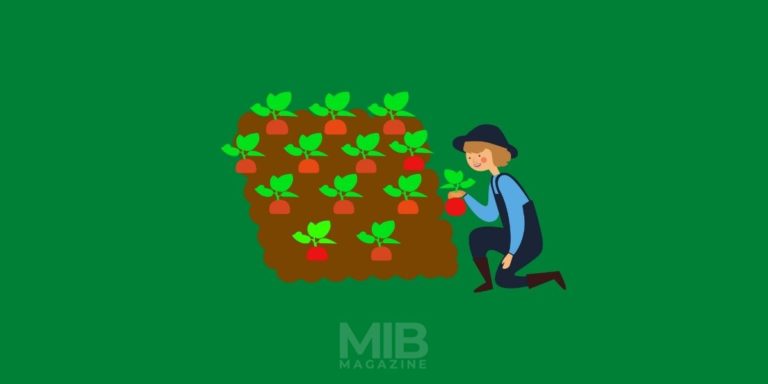Indoor Vertical Farm Business Plan & Profit Margin

Vertical farming is a technique of growing plants in rows and columns with the use of less space. This idea gets the interest of people looking to start business with small area. The basic opportunity lies in the hands of the entrepreneurs who start the business. Vertical farming can be applied in any place if there is a proper interior work done. This can be explained by learning the importance of place utilisation. To start this business on large scale, you need architects, LEDs and proper software. In this researched article, we will discuss about how to start vertical farm business and what are the available methods are there which you can use in this farming.
- Architects – Vertical farming is feasible only if there is a planned interior work which in-turn is necessary for irrigation purposes. And for this, architects who specialise in gardening interiors are required. Thus, another opportunity for anybody in vertical farming is earning by working as a Vertical farming architect.
- LED – LED is a component which is used for plant growth in vertical farming, if the method is not one among hydroponics. Therefore, people who do LED lights business do have an opportunity in the field of Vertical farming.
- Software – The growth and quality of the plants grown are at times monitored by special automated software programs if the business is run with huge investment. These software programs are employed at the place of farming by special software professionals. Due to this work done in vertical farming, software can also be included under the opportunities of vertical farming.
Basic requirements to start vertical farming business
Vertical farming basically defines itself as farming done in vertical form instead of the typical horizontal form. The basic requirements of vertical farming differ for each size of business.
- Size of the area utilised for farming is not a matter to be considered in this type of farming. Even a small area in terrace would do.
- Large business or investment uses high tech machines and factors to start vertical farming, whereas small investment requires lesser items for the start.
- First discussing the need for small business, say even home. To start vertical farming at home one needs a wall or any vertical plane to initiate planting. These vertical planes can be fitted with tubs or small containers.
- These containers are filled with sand, gravel or even liquid. People who need much more reduction in cost can use water bottles as a container. The main point is healthy nutrient rich plant or the fruits and vegetables from it.
- This technique stresses on less use or even no use of soil. Considering soil elimination, this method would greatly facilitate farming at home.
Next is farming done at higher levels. This insists on the use of high-tech machines and equipment. Here in this huge business, entrepreneurs are put to a situation to invest more in the setup. Setup costs are high due to installations of tubes and containers of high quality.
Large business cannot maintain all work by single individual, thus labour aspects are to be considered while planning for large business. The number of workers used will be directly proportional to the size of the business. As mentioned, monitoring work is done by software and so computerized environment is required for large scale vertical farming business.
Summary of requirements for vertical farming at home
- Considerable area of land or terrace to install small setups
- Containers or bottles for planting
- Proper irrigation methods
- Good light source for growth
- Regular check to ensure standard rate of growth
Summary of requirements for vertical farming at industrial level
- Large area of land
- Software program to monitor growth
- Workforce to maintain the whole setup
- Architects to design the layout in the most profitable way
- Materials for construction of the vertical farm
- Climate control systems within the industry
- Narrow LED lights for stimulating growth
The above lists are the basics for vertical farming in respective sizes of business. Changes do occur in these requirements depending on the individual’s interest in different way of establishment.
Favourable season for vertical farming
Vertical farming is not limited to one particular season to start with. Either a sunny day or a breezy day, vertical farming is not influenced by them in case of huge businesses. Varieties of plants are grown using this technique and the season also changes accordingly.
Crops suited for vertical farming
- Lettuce
- Spinach
- Basil
- Tomatoes
- Chillies
- Herbs
Apart from the above listed crops, there are several other crops that can be grown using vertical farming. These are just a showcase image of the rest. This is to not limit the readers within the listed products.
Vertical farming processes
According to Garden Grove tree professional for gardens, the processes of starting a vertical farming business greatly varies according to the methods adopted. For anybody thinking about a commercial vertical farming business, knowledge on the different methods of farming is needed. Firstly, discussing about the meaning of each in simple words.
Indoor vertical farming methods
- Aeroponics- Farming with the help of mist sprayed on the roots
- Hydroponics- Farming with the use of nutrient rich liquid
- Aquaponics- Farming with the use of fishes
Aeroponics farming Method
- Aeroponics is a method which involves the activity of spraying nutrient rich water to the roots of the partially grown plantlets.
- This method has a start by allowing a set of partially grown plantlets suspend over any chosen medium (whichever suits the financial background of the entrepreneur).
- The mist sprayed on the roots of the plants acts as a substitute to pure water and the whole process is carried out in a setting of moisture occupied environment.
- The nutrient sprayed directly acts on the roots of the plants, helps in storing the vitamins and minerals at its maximum.
- The roots are sprayed on a regular basis keeping it free from dryness.
- Last but the most important point to be considered is, this method of hanging the plantlets free from soil or any other medium allows roots to survive in oxygen contented surrounding.
Hydroponics farming Method
- This method is considered to be the simplest when thinking about the steps involved in it. Very few steps make up the whole process without any complex functions.
- The plantlets taken for farming are incorporated in any medium, but not soil. The choice of medium depends on the available area for farming and the layout or construction of the setup.
- Medium can be anything like coconut fibre, coconut peat, sand, gravel and so on. Basic objective is to select any medium which can substitute soil.
- As soon as the medium is chosen, planning should be made to decide on the method of allowing nutrient formulated water to the roots.
- Hydroponics and aeroponics differ only in the method of how nutrient rich water is exposed to the roots. Making it into simple words, instead of spraying it on the roots the water enriched with various nutrients is made available at the end of roots by allowing the plantlet to hang on it is harvested.
- And for this, the composition of the water should be clearly checked as and when required. It is very important to check for the quality of water since the roots are always suspended in it. Any error in the nutrient content may adversely affect the growth.
Aquaponics Farming Method
- The last method is Aquaponics. Though this method does come under the techniques of aquaponics, it is not majorly used by many. It suffers from a drawback of double maintenance.
- Plantlets are introduced into any porous medium above a waterbody of fully grown fishes.
- Fishes secrete their wastes in the form of ammonia and nitrate which serves as nutrients to the roots.
- The plant takes the nutrient, that is the waste and thereby cleaning the water.
Harvesting
- Harvesting takes place once the plant reaches the fullest growth or matured state.
- In-house farming involves chopping the grown parts of the plant with the use of any available cutting equipment.
- Commercial farming uses special-purpose machines to cut them and also to make the work fast since the area covered is huge.
Business Opportunity
Then comes the selling part of the plants produced. More than the growing process, the process of selling is important since it makes the end of whole game- which is the profits made.
- One can simply sell the harvested plants in the available market or can use it for own purpose if the case is in-house smaller space covered farming.
- On the other hand, commercial farming does not operate like the in-house farming when it comes to selling. A perfect study is required to find the areas of reducing cost after production.
- Packaging and transportation should be clearly devised with the least investment.
- Profits should be calculated on a fair margin allowing the entrepreneur to allocate money for further production.
- Proper pricing method should be applied after studying the situation of both the company and the demand in the market.
Use below methods to sell your product
- Starting own production unit with a brand name.
- Supplying to other sellers without emphasising on brand.
- Online selling on Amazon, eBay.
- Collaboration with grocery sites or companies.
- Supply to the city’s central market.
Profits margin in vertical farming business
- The profits made completely depends on the cost of production and wise pricing policy. Two major costs to be considered are Fixed and Variable.
- Fixed costs involve the amount spent on everlasting assets such as construction, infrastructure, layout expenses, and machines installed.
- Variable costs make up the money divided in the form of labour cost, raw materials, miscellaneous expenses, transportation and packaging.
Enhancing profits
Profits can be made a little high than usual by adopting few things such as:-
- Using aeroponics for less usage of water.
- Control systems for temperature regulating standard growth.
- Extremely profitable layout without the waste of even a single square foot.
- Proper maintenance to avoid work being interrupted due to repairs.
- Combining aeroponics and hydroponics together for greater productivity.
- Multiple units in one package to cut down packaging costs to some extent.
- Eliminating high quality containers since these perishable goods do not require longer stay in the containers used.
Planning for profits in this business
As already mentioned, profits made completely lies in the hands of intelligent planning. For example, a person with 1000 square feet might start vertical farming by arranging the medium horizontally one above the other. He keeps increasing the number of rows on top of each other. This increase the maintenance costs by installing heightened machines for harvesting purposes. Therefore, in this case, it’s a loss or a poor profit.
Another case is, a person with 500 square feet makes the layout wisely by stacking four rows and lessening the floor space utilising maximum of it for growing area. Tools used here are not complex and the production is also high.
Demand
- The market demand for the product is a factor to be considered while fixing the price. A product with less demand priced really high will not pave way for a profitable business.
- High profits can be made if the product is a rare one for that particular area. For example, mint leaves are rare in countries like America, Canada, and few other countries. Therefore, growing these can make the price high since it is needy there.
The last phase of the cycle
- Plants harvested after being sold should also have some retained within the company itself. For first time planting, plantlets are purchased which comes under investment. But for the next routine, source for planting should be from the company itself. For a model, lettuces are types which grow even after cutting. The rest of the unsold plants should be used for next set of planting.
- Nutrients should be re-composed for different variety of plants.
- The setup should undergo a check process before starting next routine.
- If needed, setup can be altered when the desired production is not achieved.
CONCLUSION
Vertical farming will serve as tool for change in the whole way of viewing the concept of farming. To make this a hit, new technological innovations are coming up to support the entrepreneurs and to make it more profitable. Investors can also undoubtedly invest in these businesses due to its incredible success in recent years.
FAQs
An indoor vertical farm is an agricultural facility that vertically stacks multiple layers of production inside a building, allowing for more efficient and productive use of space. This type of farming also utilizes hydro- and aeroponics systems, allowing for production with less water, pest, and weed management.
An indoor vertical farm can be beneficial in multiple ways. By vertically stacking different levels of production, indoor vertical farms are able to produce greater yields at a faster rate and with fewer resources such as water, fertilizers, and pesticides. Additionally, indoor vertical farms can be located in primarily urban areas, providing fresh produce to the local community.
An indoor vertical farm can grow a variety of crops, including fruits, vegetables, herbs, and greens.
An indoor vertical farm can range greatly in size, based on the needs of the operation. Generally, indoor vertical farms require a large footprint, typically at least 1000 – 3000 square feet.
In order to run an efficient indoor vertical farm, multiple forms of technology are utilized. The most common technology used in indoor vertical farms are LED lighting, large hydroponics systems, and computerized irrigation systems.
When developing an indoor vertical farm business plan, additional elements to consider include the most suitable crop to grow in the facility, the costs associated with setting up the facility, and a marketing plan.
An indoor vertical farm will generally face competition from other farms and agricultural businesses in the local area, as well as other businesses offering similar products.
The cost of developing an indoor vertical farm depends on the size and scope of the project. Generally, the majority of the cost will be associated with the purchasing of equipment, such as LED lighting, and to cover the cost of labor and maintenance.
When opening an indoor vertical farm, there are multiple legal regulations that must be adhered to. These regulations may vary depending on the location and scope of the project.
An indoor vertical farm can remain competitive and successful by utilizing the latest technology, producing high-quality products at a competitive price, and utilizing an effective marketing plan. Additionally, staying up-to-date with any legal regulations that may apply is important to maintaining a successful business.






